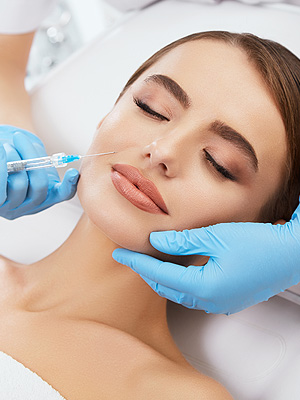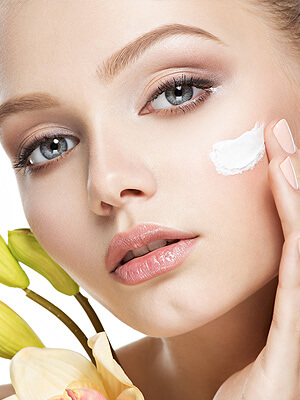As you age, your skin tends to lose elasticity, leading to wrinkles and sagging skin. While this is normal, it can get particularly frustrating when it comes to the eyelids.
Baggy eyelids may not just make you feel self-conscious; they can limit your vision! If your upper eyelids are sagging, you may be a good candidate for an upper eyelid lift, also called a blepharoplasty.

Keep reading to learn more about upper eyelid lifts and how to know if you should consider this procedure!
What is an Upper Eyelid Lift?
Blepharoplasty is an eyelid surgery that treats sagging, droopy eyelids. It can treat the upper eyelids, the lower eyelids, or both. The procedure can be used for patients whose eyelids have too much loose skin and those who struggle to open their eyelids fully.
There are several reasons why people may struggle with their upper eyelids. Blepharoplasty can be an excellent way to correct this issue in some cases.
In some cases, the problem is not due to excess skin but, in fact, due to the eyelid muscle itself. This may require another type of upper eyelid lift, called a ptosis repair.
Are you experiencing eyelid drooping?
What Are the Reasons to Have Upper Eyelid Surgery?
One common cause of sagging eyelids, upper or lower, is ptosis. Ptosis is caused by weakened muscles around the eyes and the skin losing elasticity.

It can happen to anyone of any age but is more common in older adults as aging naturally weakens muscles and skin. If you have ptosis, you may need to have a specific kind of eyelid lift surgery called ptosis repair.
Ptosis repair can help improve the muscle position of the lid, rather than only removing fat and skin, which is what happens during blepharoplasty. Dermatochalasis is another condition that leads to saggy upper eyelid skin.
It occurs when the skin loses its elasticity over time and sags down over the eyelashes and sometimes into the field of vision. Blepharoplasty is an excellent option to treat drooping eyelids caused by excess fat or skin.
The reasons patients may consider upper lid blepharoplasty are:
- To remove excess upper eyelid skin that is blocking vision or feels heavy
- To correct sagging eyelids from age-related ptosis or dermatochalasis
- To eliminate functional problems from involuntarily spasming eyelids
- To open up and rejuvenate the area around the eyes that looks tired or aged
- To improve peripheral vision that is blocked by sagging eyelid skin
- To reduce strain caused by trying to keep sagging eyelids open
Regardless of age, if these conditions affect your vision, self-confidence, or both, a blepharoplasty can help!
Improve Your Appearance and Your Vision With Blepharoplasty
Baggy eyelids are very common in older individuals, and many people don’t mind them at all. But others may feel more self-conscious about how they look because they appear more tired or older than they really are.
Blepharoplasty can rejuvenate your appearance and make you look and, more importantly, feel more like yourself. If your upper eyelids sag, it can also impede your vision.
Your skin can sag in a way that blocks your vision. Struggling to keep your eyes open also affects your vision.
So when you choose to get blepharoplasty, you can improve your appearance and your vision at the same time! Because blepharoplasty or ptosis repair is sometimes considered medically necessary in order to fully restore your field of vision, the surgery may also be at least partially covered by health insurance.
Blepharoplasty is usually considered a cosmetic procedure not covered by health insurance. However, if your upper eyelids limit your visual field, insurance may cover part of the surgery even if you only want the procedure for cosmetic reasons!
What Happens During Blepharoplasty?
An upper eyelid lift is usually an outpatient procedure, meaning you’re able to go home the same day. The procedure itself is fairly simple.

During blepharoplasty, small incisions are made into the eyelid along the natural creases in order to hide any scarring. Excess tissue from fat and skin is removed, and then the eyelid is stitched up, usually with only one or two stitches.
Recovery from eyelid surgery is also minimal, with swelling and bruising only lasting a week or two. And once you recover, you’ll find your eyelids are much tighter, allowing you to see better and feel better about your appearance!
Who is a Good Candidate For Blepharoplasty?
If you’re in good health and your eyelids droop, you’ll likely make a great blepharoplasty candidate! If you want to have the procedure covered in any part by health insurance, your upper eyelids must be limiting your vision in most cases.
As part of your evaluation for blepharoplasty surgery, our surgeons will assess your vision to determine if your eyelids are getting in the way of your vision and, if so, to what degree. This will help you in making a claim to your insurance company for coverage.
Whether or not your vision is suffering, it’s also completely fine to have upper eyelid surgery for purely cosmetic reasons! The procedure is minimally invasive and low-risk, so many patients find it’s worth getting to improve their self-confidence.
Are you interested in learning more about blepharoplasty or determining if you might be a candidate for the procedure? Schedule an appointment at Revive MedSpa in Hazelton, Kinston, Scranton, PA, today!



